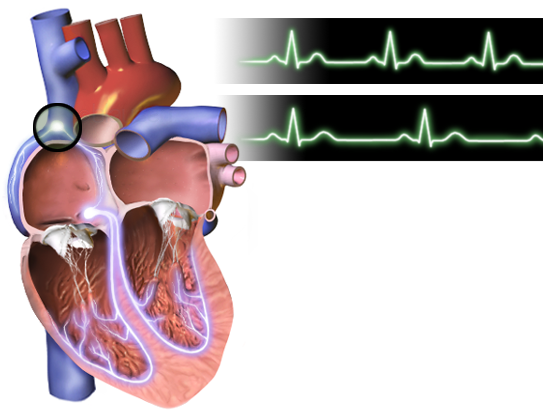Bradycardia Causes, Symptoms, Diagnosis and Treatment

What Is Bradycardia?
Bradycardia, also known as bradyarrhythmia, is a slow heart rate, namely, a resting heart rate of under 60 beats per minute (BPM) in adults. It is a type of cardiac arrhythmia.
For some people, a slow heart rate does not cause any problems. It can be a sign of being very fit.
In other people, bradycardia is a sign of a problem with the heart’s electrical system. It means that the heart’s natural pacemaker isn’t working right or that the electrical pathways of the heart are disrupted.
In severe forms of bradycardia, the heart beats so slowly that it doesn’t pump enough blood to meet the body’s needs. This can cause symptoms and can be life-threatening.
An implanted pacemaker and other treatments may correct bradycardia and help the heart in maintaining an appropriate rate.
Causes Of Bradycardia:
Possible causes of bradycardia may include:
- Changes in the heart that are the result of aging.
- Diseases that damage the heart’s electrical system. These include coronary artery disease, heart attack, and infections such as endocarditis and myocarditis.
- Conditions that can slow electrical impulses through the heart. Examples include having a low thyroid level (hypothyroidism) or an electrolyte imbalance, such as too much potassium in the blood.
- Some medicines for treating heart problems or high blood pressure, such as beta-blockers, antiarrhythmics, and digoxin.
- Heart disorder present at birth (congenital heart defect)
- A complication of heart surgery
- Imbalance of mineral-related substances necessary for conducting electrical impulses (electrolytes)
- Repeated disruption of breathing during sleep (obstructive sleep apnea)
- Inflammatory disease, such as rheumatic fever or lupus
- The buildup of iron in organs (hemochromatosis)
Symptoms Of Bradycardia:
Bradycardia causes the following sing and symptoms:
- Near-fainting or fainting (syncope)
- Dizziness
- Weakness
- Fatigue
- Shortness of breath
- Chest pains
- Confusion or memory problems
- Easily tiring during physical activity
Diagnosis Of Bradycardia:
A diagnosis of bradycardia in adults is based on a heart rate less than 60 bpm. This is determined usually either via palpation or via an ECG.
If symptoms occur, a determination of electrolytes may be helpful in determining the underlying cause.
Other tests include:
- Tilt table test, which helps in understanding how bradycardia contributes to fainting spells.
- Exercise test.
Treatment Of Bradycardia:
How bradycardia is treated depends on what is causing it. Treatment also depends on the symptoms. No treatment is required if no symptoms are exhibited.
- If damage to the heart’s electrical system causes the heart to beat too slowly, a pacemaker is needed. People older than 65 are most likely to have a type of bradycardia that requires a pacemaker.
- If another medical problem, such as hypothyroidism or an electrolyte imbalance, is causing a slow heart rate, treating that problem may cure the bradycardia.
- If a medicine is causing the heart to beat too slowly, the doctor may adjust the dose or prescribe a different medicine.
By : Natural Health News




